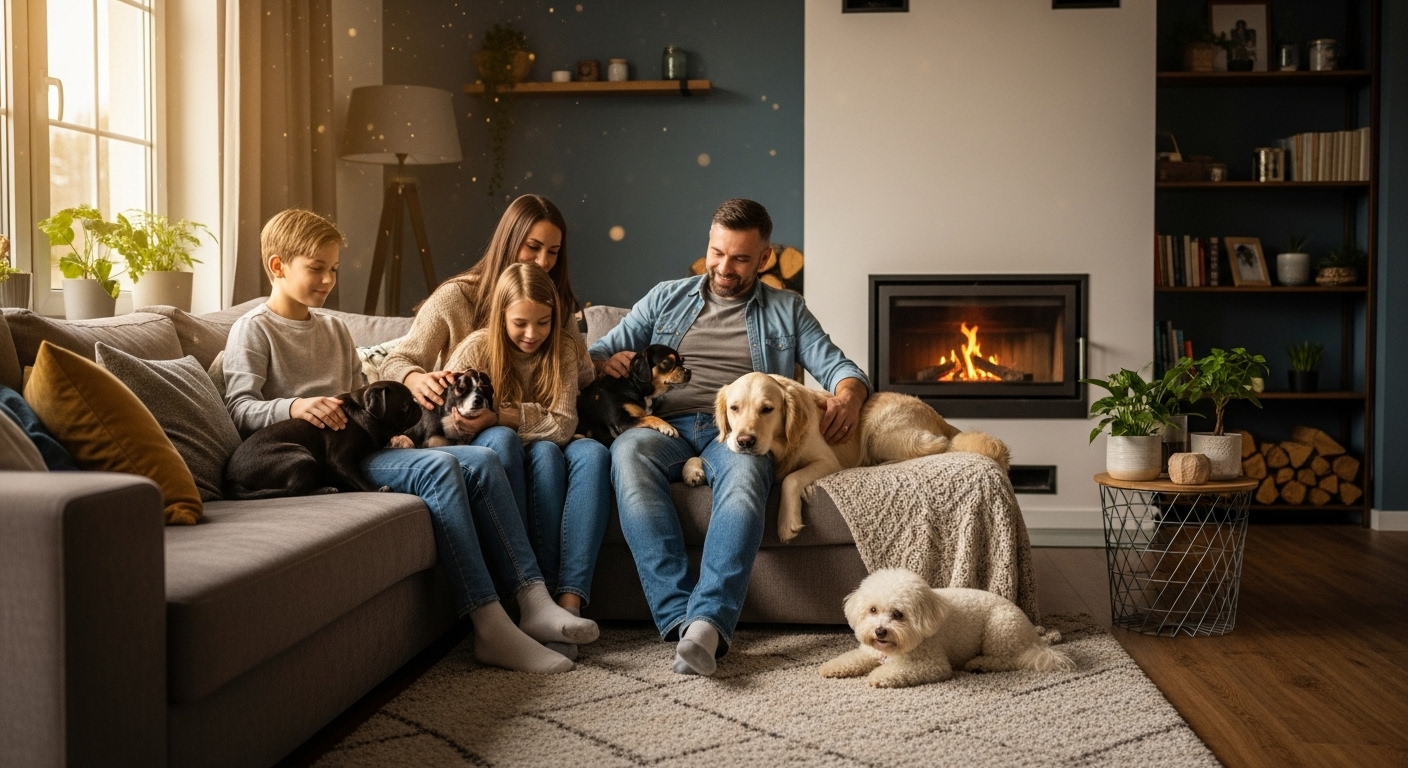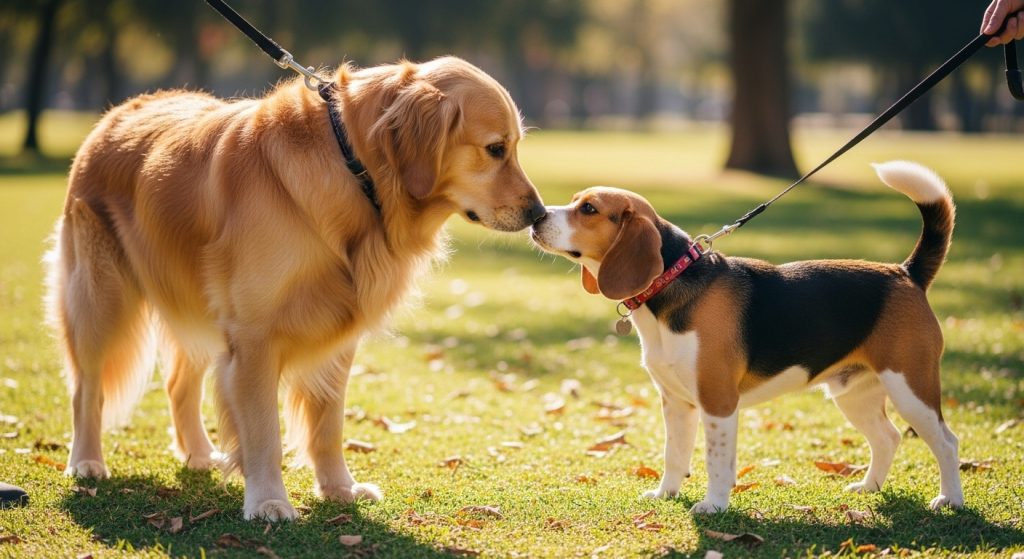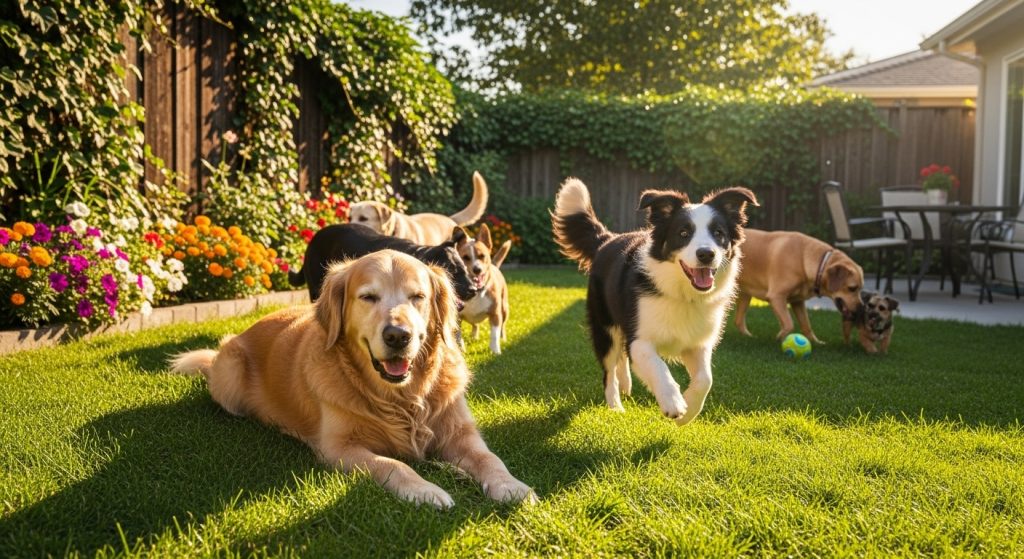Living with more than one dog can bring double the joy — but also double the challenges. Whether you’re a seasoned pet owner or just welcomed a new furry friend, managing multi-dog households requires balance, patience, and consistency. In this guide, we’ll explore expert-backed strategies to maintain peace, reduce stress, and ensure your dogs live together happily under one roof.
Building the Right Foundation — Establishing Hierarchy and Routine
When multiple dogs share a space, it’s essential to establish clear structure from day one. Dogs are social animals with a natural sense of hierarchy. Without structure, competition can lead to tension or even fights.
1. Understand Canine Hierarchy
Every pack has a leader — and that leader should be you. By calmly asserting authority through consistent commands, positive reinforcement, and body language, you show your dogs that you control resources such as food, toys, and space.
Avoid showing favoritism. If one dog always gets attention first, others may feel left out or become jealous. Rotate affection and playtime equally to maintain fairness.
2. Consistent Feeding Schedules
Feeding time is often the trigger for aggression in multi-dog homes. Always feed dogs in separate bowls, ideally with some distance between them.
If any dog guards their food, establish boundaries early. Use calm verbal corrections and reward non-aggressive behavior.
3. Daily Routine for Stability
Dogs thrive on consistency. Keeping a structured daily routine — including feeding, walks, and playtime — reduces anxiety and prevents territorial disputes.
Walk all dogs together to reinforce the idea of being one cohesive pack, led by you.
4. Positive Reinforcement, Not Punishment
Correct gently, reward generously. Instead of scolding, reward calm and polite interactions. Over time, this shapes long-term behavior and fosters respect between dogs.
Reducing Tension — Training and Social Dynamics
Even well-behaved dogs can clash when emotions run high. Managing multi-dog households means anticipating potential problems and preventing them before they happen.
1. Recognize Body Language
Learn to read subtle cues — stiff tails, growling, or side-eye glances often precede a fight. Intervene calmly before tension escalates. Redirect attention with toys, commands, or treats.
2. Individual and Group Training Sessions
Train each dog individually first to build focus and trust. Once each dog understands commands, begin group sessions to reinforce cooperation.
Teach “sit,” “stay,” and “leave it” as universal cues — they’re invaluable for managing group dynamics.
3. Control Resources to Avoid Rivalry
Food, toys, and your attention are valuable resources. Avoid leaving high-value items like bones or favorite toys unattended. Controlled play sessions prevent resource guarding.
4. Introduce New Dogs Gradually
When bringing home a new dog, never rush the process.
Start with neutral territory introductions — a walk outside where neither dog feels ownership. Then progress to short indoor sessions supervised closely.
Creating Long-Term Harmony — Enrichment, Space, and Emotional Health
Once basic rules and routines are established, maintaining harmony means focusing on your dogs’ emotional well-being. Boredom or lack of stimulation can lead to destructive behaviors or competition.
1. Provide Mental and Physical Enrichment
Dogs in multi-dog households need activities that stimulate both body and mind.
Try puzzle feeders, scent-tracking games, or agility training to burn energy and boost confidence. When dogs are mentally satisfied, conflicts drop dramatically.
2. Respect Individual Space
Just like humans, dogs need downtime.
Provide each dog with a personal resting area — a crate, bed, or corner where they can retreat without being disturbed.
Avoid forcing constant interaction. Giving dogs autonomy helps prevent tension and builds trust.
3. Schedule Quality Time Separately
Spend one-on-one time with each dog to strengthen individual bonds. It reassures them that they’re loved equally and prevents jealousy.
Simple activities like brushing, short walks, or quiet cuddles can make a big difference.
4. Monitor Health and Age Differences
Senior dogs may have less tolerance for play, while younger ones have boundless energy.
Adjust routines to fit individual needs — for example, giving older dogs extra rest while young ones enjoy more active sessions.
Peace, Balance, and Joy in a Multi-Dog Home
Managing multi-dog households is an ongoing journey — not a one-time effort. With patience, structure, and empathy, your home can become a peaceful pack environment where every dog feels secure and loved.
Remember, harmony isn’t about dominance — it’s about balance, respect, and clear communication.
When you invest time in understanding your dogs’ needs and maintaining routines, the result is a joyful, loving home filled with wagging tails and lasting friendship.




